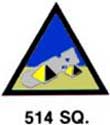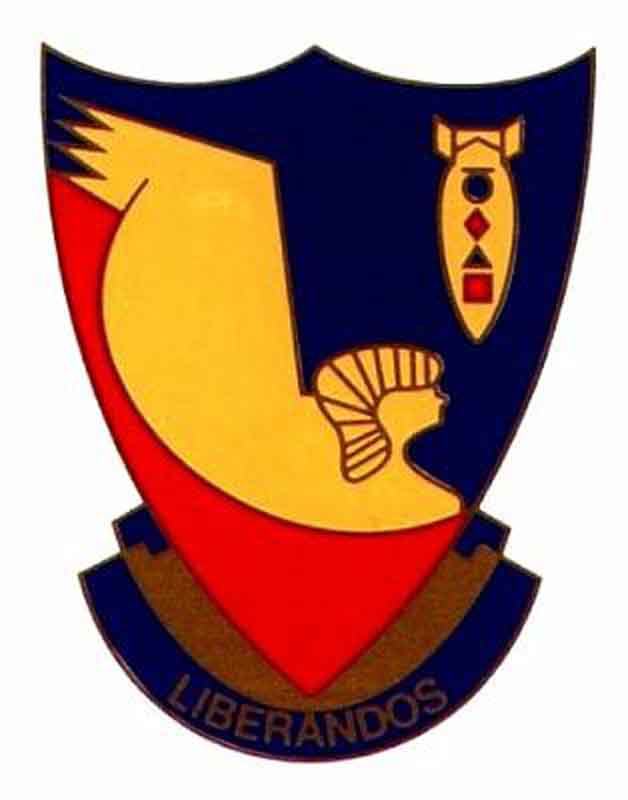Samuel D. Rose - Crew Formation
After 20 days they sent us to Wendover, Utah to be reassigned. I was attached to the 330th the Terrell Group on Oct. 31, 1942 and sent to Davis-Monthan Field, AZ. I had several instructor pilots and was finally made a first pilot and given a crew of my own. That's the one I trained and went over seas with. A list of the men joining my crew at Tucson in 42 was Ralph O. Grace, Co-pilot he was only twenty years old, the youngest on the crew and he never grew up. Willard B. Kesler, navigator, a skinny likable guy whose home and family we visited at Hillsboro, Ohio, when we were stuck in Cincinnati a few days. Charles Holly Midgley, bombardier from Gadston, ALA. We buzzed his home on our way to Florida in March. William S. Nelson, the flight engineer a nice guy and good engineer. Joseph E. Maleski, top turret gunner, very good eye sight, and slow talking. One time on a practice mission he tapped me on the shoulder and said. Lt. I'm sorry but I just shot your antenna off. That was before they put stops on the turrets so you couldn't shoot the props, etc. Carl L. Valentine, radio operator and gunner, Allyn Leavey, assistant radio operator and gunner, Charles Marshall, tail turret gunner, shot up a few times in combat. Frederick S. Moon, a quiet little guy. He was our extra man, bottom hatch gunner which was no good. He got killed over Messina Sicily early in the war.
The first of Dec. 42 we moved to Alamogordo, N.M. while I was here I strayed a little far out of our area and buzzed Happy Texas (my kinfolk). One day at Alamogordo was not my day. The first plane I started to fly the shimmy damper on the nose wheel went out. The next one the magneto on one engine didn't work. The third got off the ground OK but number three engine started a fire about a hundred feet off the ground. We
got the fire out after it ate part of the wing. So I called the tower and said to clear the runway I was coming straight back in down wind, they said I couldn't do it and I said watch me. So I pulled up to a stall and kicked it over and landed with no trouble. They offered me another plane and I said three is enough for one day.
I also got to Juarez, Mexico for Thanksgiving, by myself, I was in a restaurant called the Cave, which it was.
On the 5th of Jan. 43 we started flying at Topeka Kansas. On the 22nd I was on a night bombing mission to Pueblo, Colo. when I lost a super charger in one engine. I landed in a 70 mile hour wind. When we got the plane tied down it hovered about two feet off the ground like a kite. Lt. Sparkman came out from Topeka in a B17 and picked us up and took us home.
Around the last of Jan., we heard six new planes were coming in and one was mine. I asked the ground crew chief to let me know what color #41-24301 was when it came in. I didn't want to go to England and fly in the rain and fog. He came and said it was Pink, that meant Africa. We put a little time on it and checked out everything. I also took it up to 33 thousand, High as it would go. While at Topeka I flew another plane to Dayton to pick up parts and landed at night on a four inch snow and used all the runway getting stopped. I was low on gas and they sent me to Cincinnati at midnight.
At Cincinnati the river was flooding and a big park across the river from the field was covered with water right up to the edge of the field and about the same height, the runway was wet so under my landing light everything was flat black. They had a girl tower operator who gave me a heading but it took me three passes to get on it. The next morning I saw a tall bluff just back of the field where I pulled up both times
I missed the runway - it was covered with houses and almost me. We
spent the night and eight more, because they pumped flood water in my tank. It was snowing and we couldn't get the plane in the hanger to change spark plugs, so we all worked outside putting 48 plugs to and engine. Some you couldn't see, you had to feel with cold hands. We had to have a new carburetor, sent to Dayton for it the next day. In a few days the engines ran but the shimmy damper went out taxing out on the
runway a few more days lost.
We finally got back to Topeka on the 19th, flew local and to Pueblo bomb range through Feb. 43. One of those missions was in an old B24 called Lorelei, It was about the first B24 ever made. It had 1/4 inch hydraulic lines, so in cold weather, as we were in then, everything moved slow. It took two pilots & the engineer to keep engines & superchargers, props all running equal. When I landed on a snowy runway the left landing gear didn't lock down, so 1/2 down the runway it started to fold up. All I could do was hold it straight down the runway with engines and brakes until the left wing tip touched the ground. I had it almost stopped but turned off the runway 900 and the left outboard props touched the ground. I had it shut down so all it did was bend one prop, mess up the wingtip and scrape paint off the belly.
I got called up by the c.o. and told I had to pay for it. Later when it had gotten fixed they found the locking mechanism was faulty.


The website 376bg.org is NOT our site nor is it our endowment fund.
At the 2017 reunion, the board approved the donation of our archives to the Briscoe Center for American History, located on the University of Texas - Austin campus.
Also, the board approved a $5,000 donation to add to Ed Clendenin's $20,000 donation in the memory of his father. Together, these funds begin an endowment for the preservation of the 376 archives.
Donate directly to the 376 Endowment
To read about other endowment donation options, click here.
Reunion
NOTE change in the schedule !!
DATES: Sep 25-28, 2025
CITY:Rapid City, SD
HOTEL: Best Western Ramkota Conference Hotel; 2111 North LaCrosse St., Rapid City, SD 57702; 605-343-8500
Click here to read about the reunion details.



















